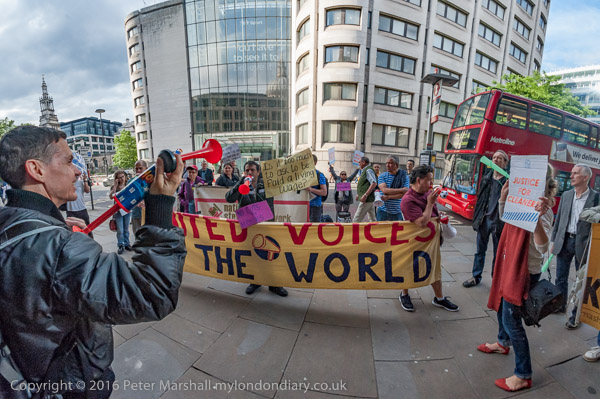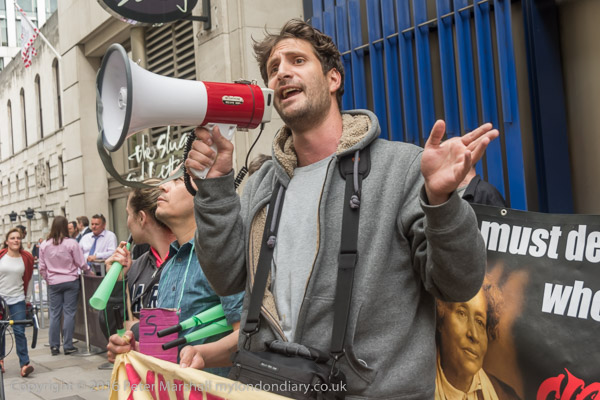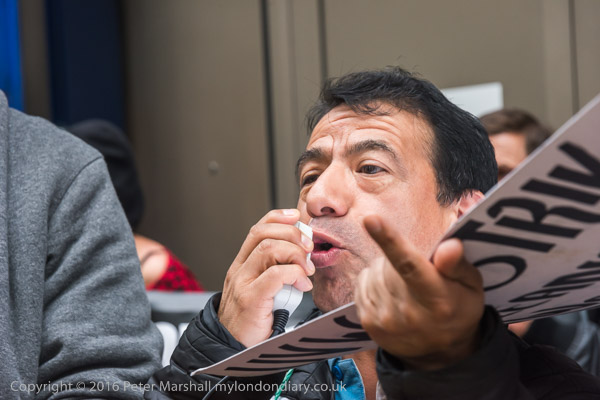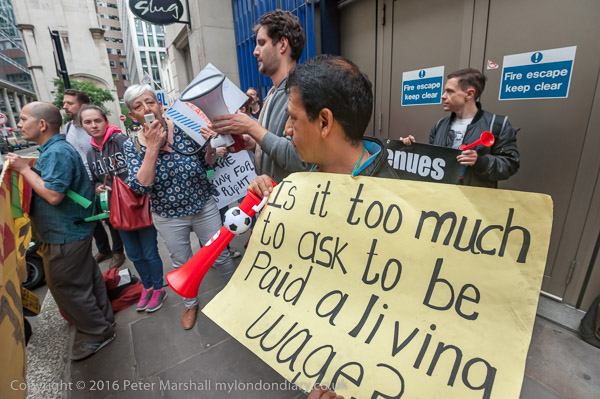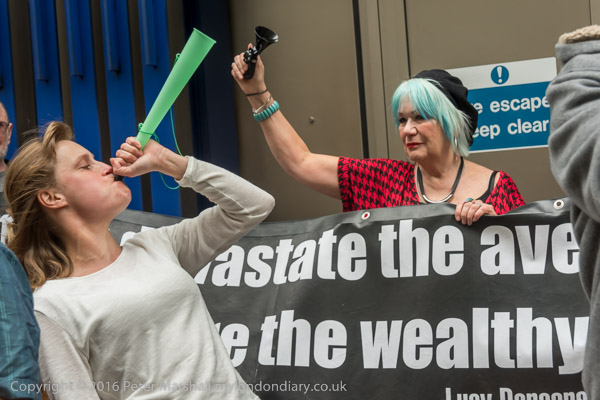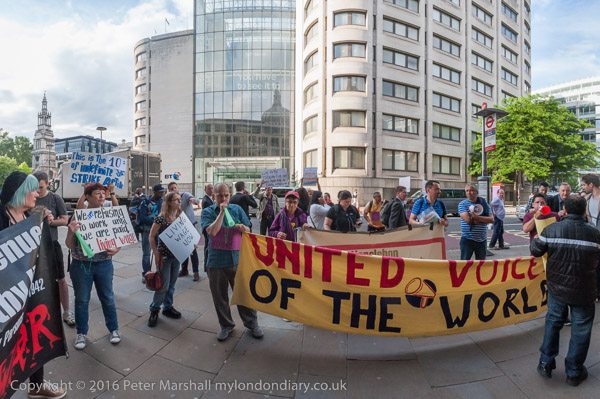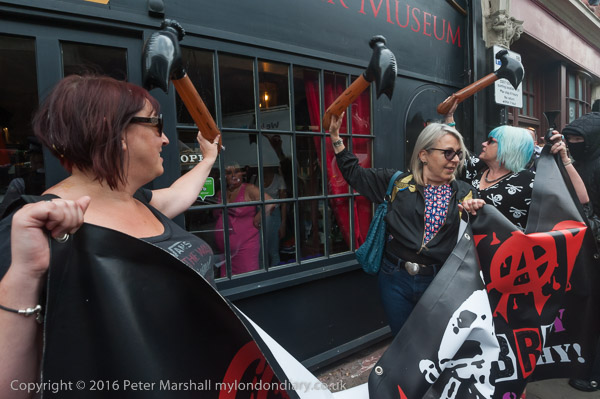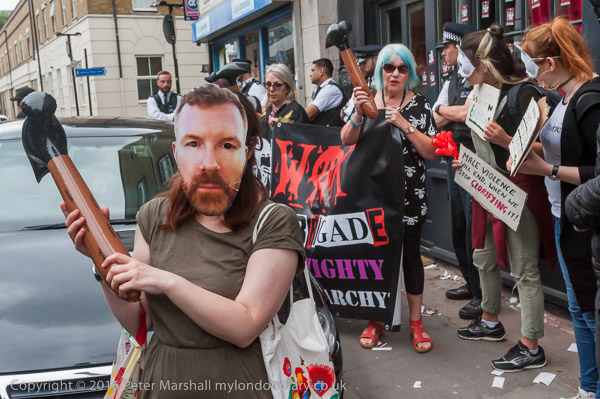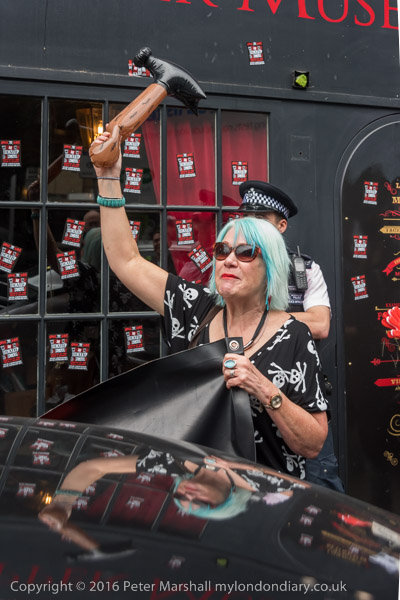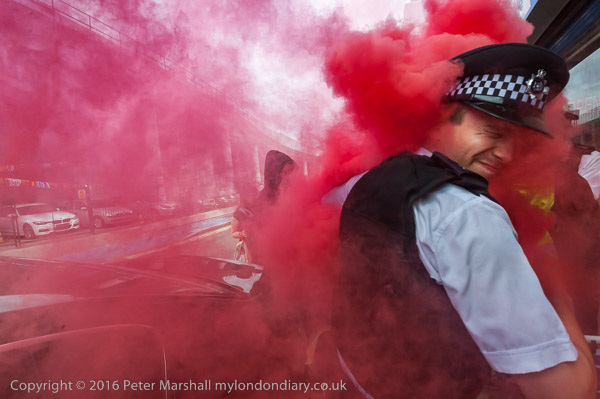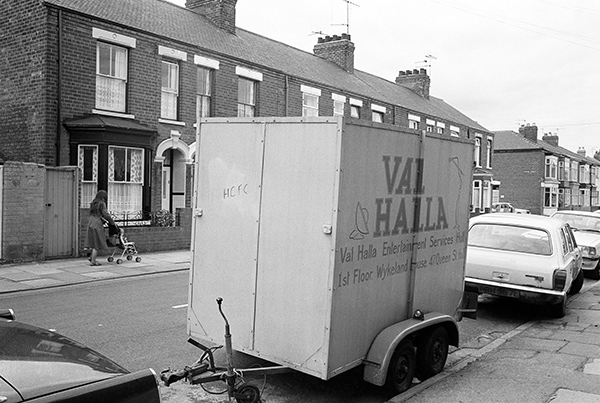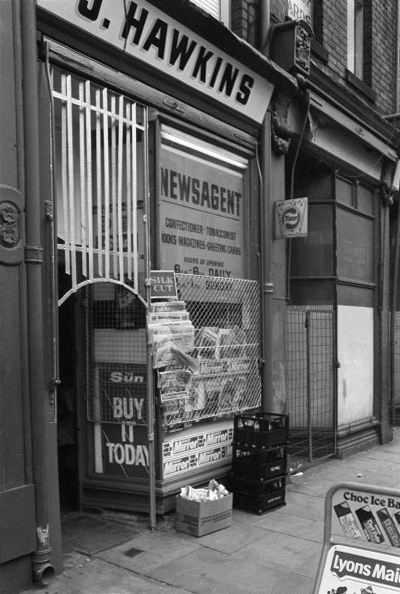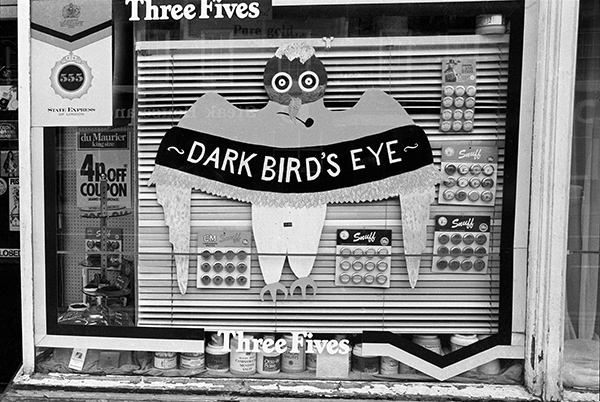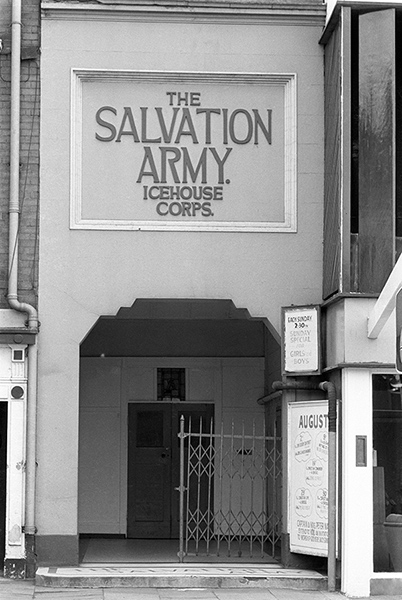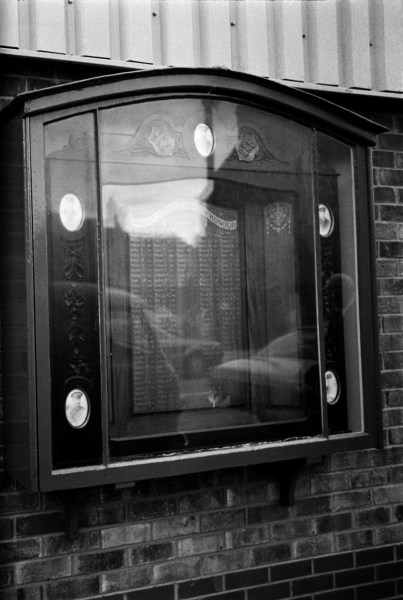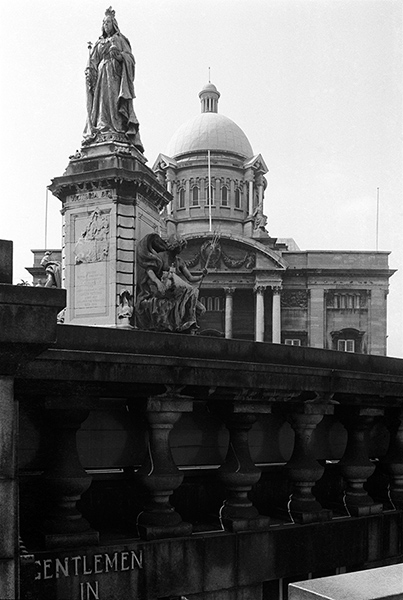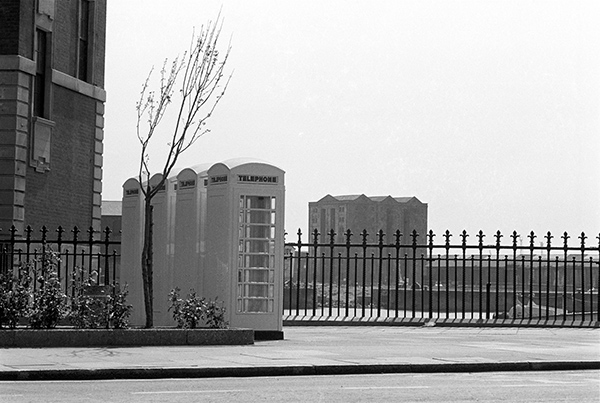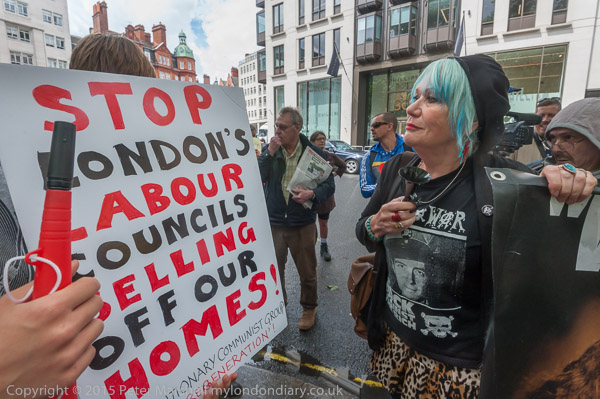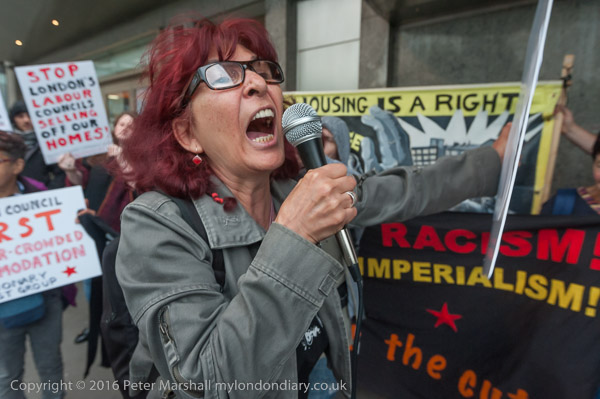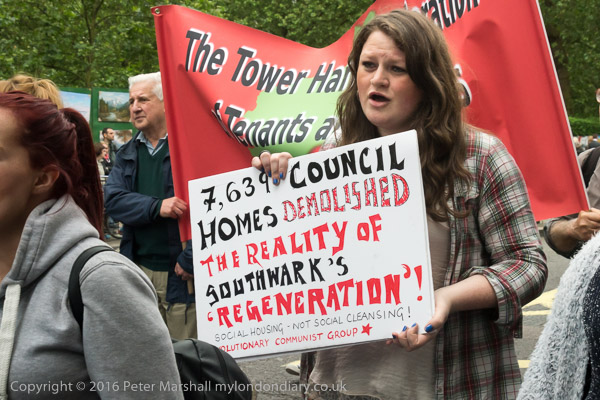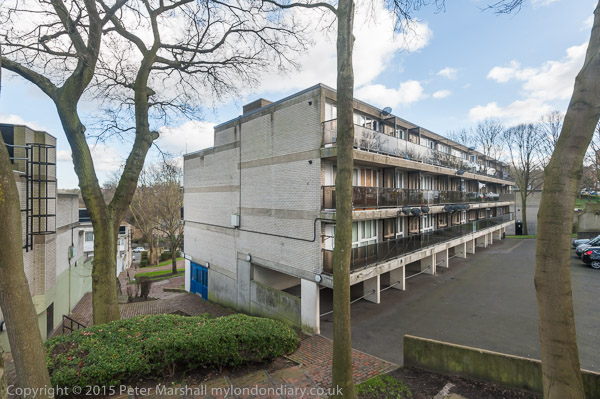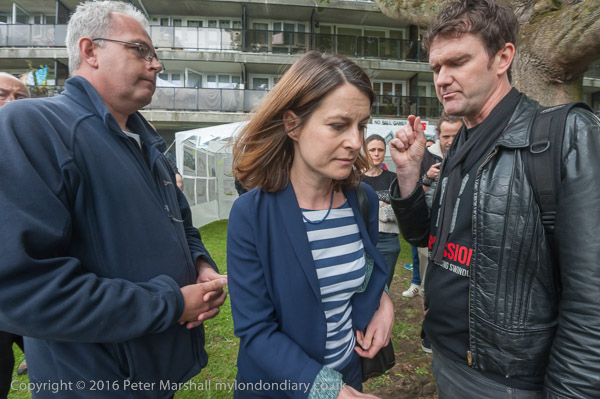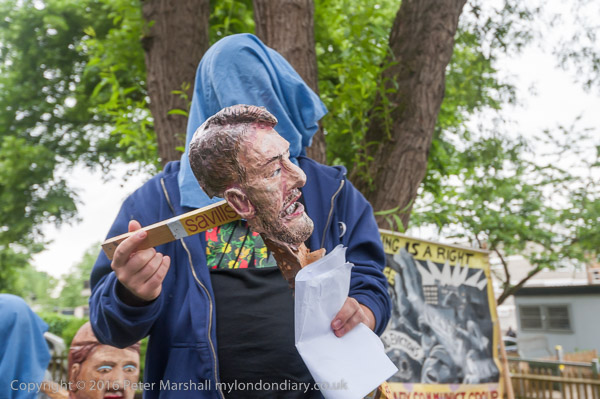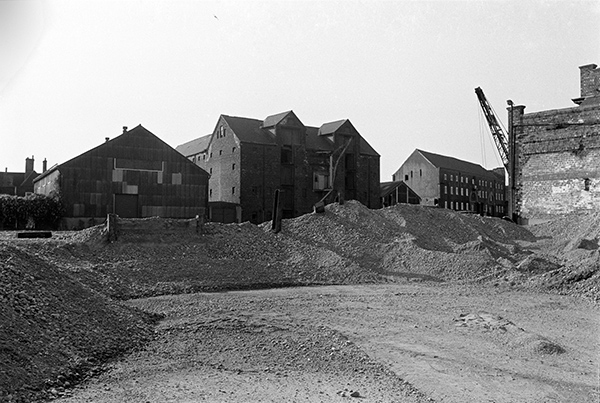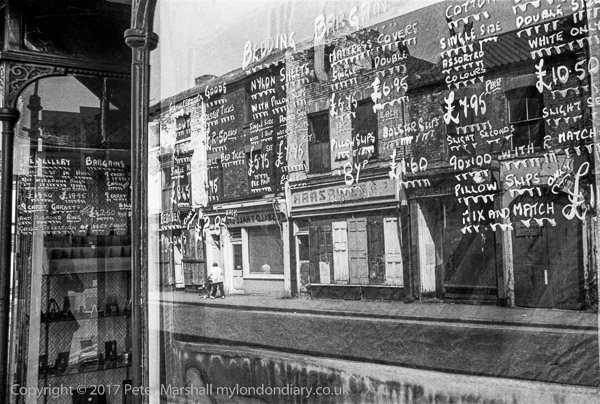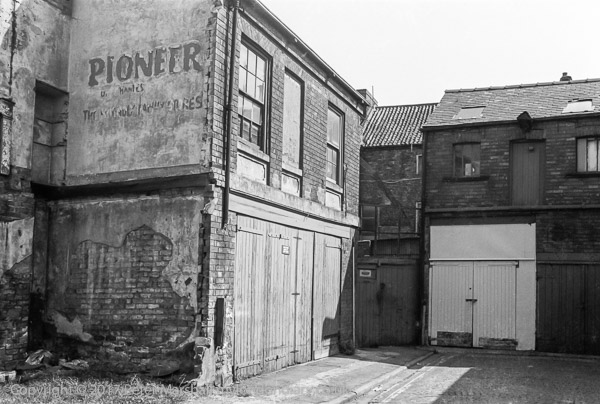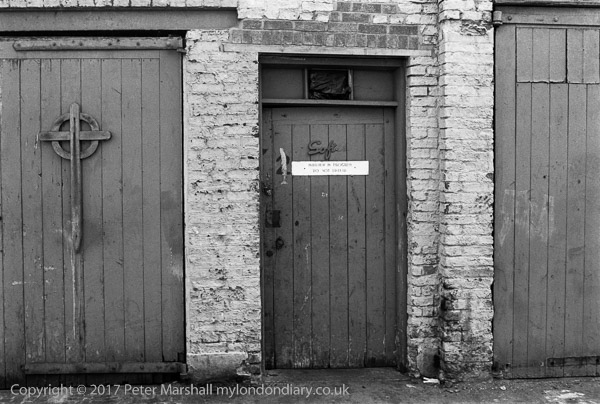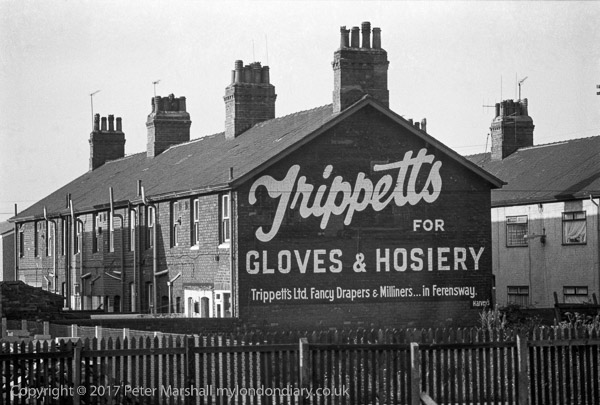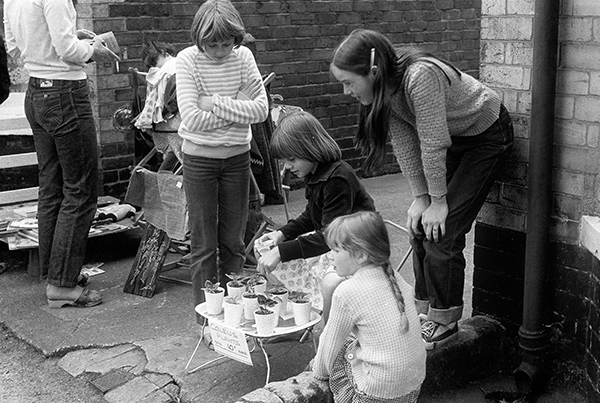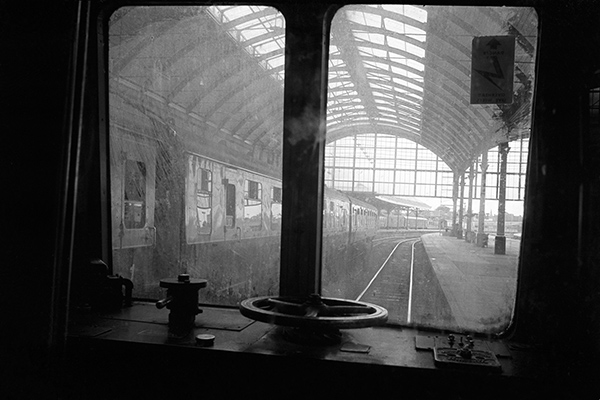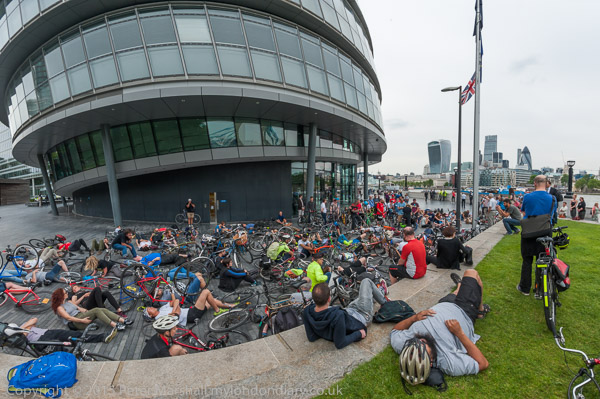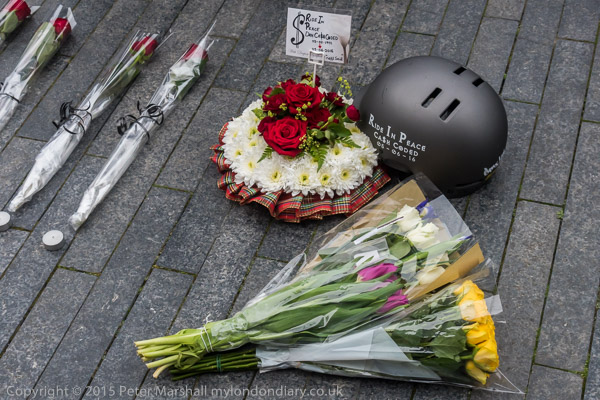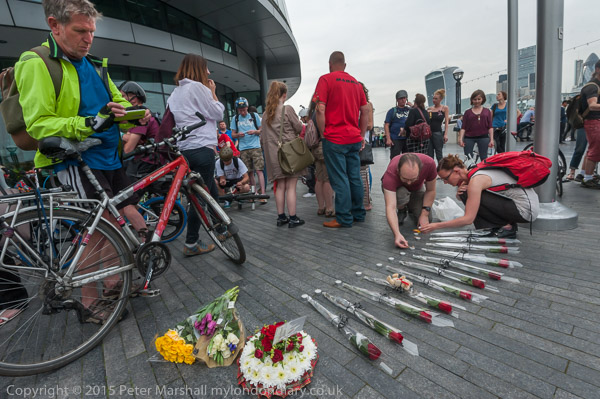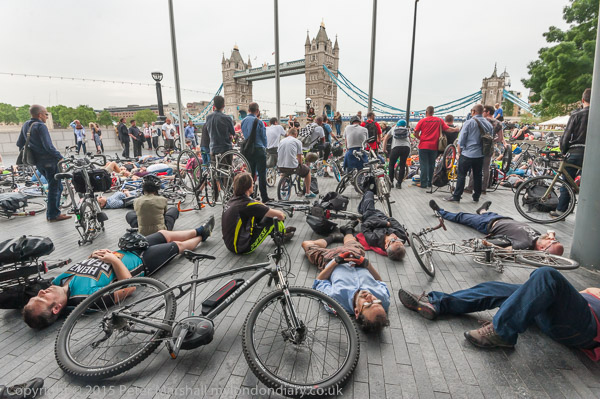My weekly digest of pictures added to Hull Photos
9th March 2017
Taken from a position which is now occupied by Princes Quay, the new housing at the left is on the other side of the dock in Princes Dock St. The squat warehouse block is on the Castle St corner and is now a chain Italian restaurant where I had to eat with my family recently. The low dockside sheds of Humber Dock have all gone, but the taller warehouses remain. One fine listed block had already been demolished when I made this picture.
Somewhat oddly, the collapsed end of a shed at left has the old name for Hull, ‘WYKE’ on it, too small to read on-line, and it was this together with the cross made by a beam and a shadow to the left that made me stop at this point and admire the shapes strung along the horizon, including the two boys fishing and ending at the dockside bollards at right. Near the centre the vertical pole supporting telephone wires that surely now led to nowhere. Unusually I took four frames, obviously working with the situation until I was satisfied with this one and wandered further onto the dockside but took no further pictures here.
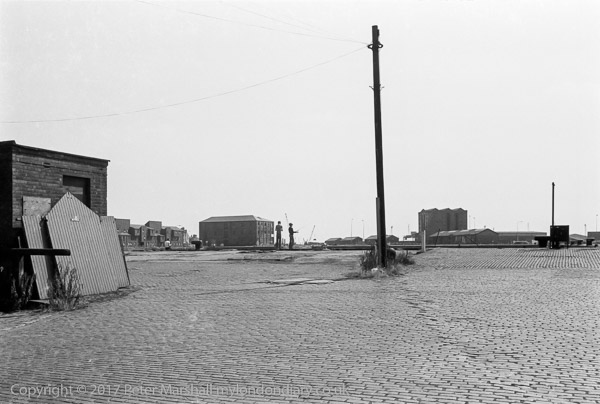
28q41: Princes Dock, Waterhouse Lane, 1981 – City Centre
10th March 2017
Most of this picture is a reflection in the shop window of a commercial stationers, with a notice reflecting the gloomy nature of business – I think the business had either closed or was about to close down.
On the east side of Paragon Square you can see two banks and then the War Memorial, and to the north is Binn’s department store, still trading but now called House of Fraser. Next down Ferensway was a large C&A, now Poundland. The Midland Bank was taken over by HSBC in 1992, though they only changed the name in 1999. This branch had closed by 2008 and the lease was up for sale and Barclays soon moved out leaving the whole frontage to Bronx, a men’s clothing store selling fashion brands with branches in Hull and Huddersfield.
I appear in a ghostly and largely headless fashion just to the right of that notice.
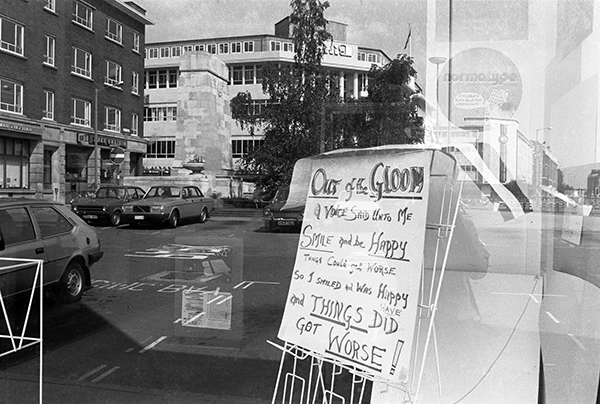
28q53: Stationers, Paragon St, Hull, 1981 – City Centre
11th March 2017
The Midland cafe, a few shops up from Osborne St on the east side of Midland Road, was closed when I took this picture, with a small notice at the bottom right of the right-hand window ‘All Enquires to 227608‘ (sic). It opened later as the Midland Juice Bar, but I think was demolished not long after for the building of Owbridge Court.
An article by Ann Godden on the Hullwebs History of Hull site informs me that this development by the William Sutton Trust in 1990 was on the site of the Cough Mixture Factory, which Walter Thomas Owbridge had bought in 1894 to build a larger factory to make Owbridge’s Lung Tonic. He had invented this in 1874 and it had become a favourite with fishermen working in arctic waters. While he demolished most of the site for his factory, the shops on Midland St were left intact. Owbridge’s was sold to a Dutch pharmaceutical company in 1959, and production in Hull stopped in 1971, with the factory closing the following year.
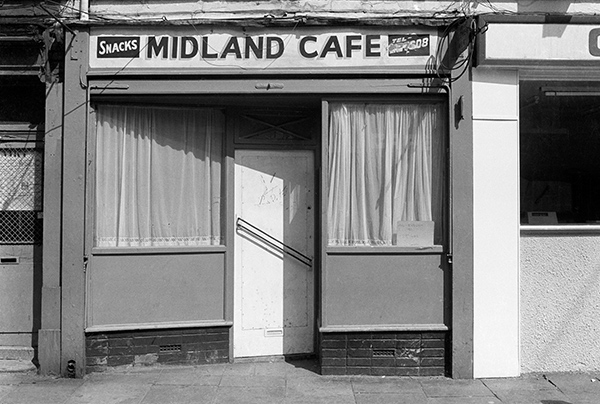
28q61: Midland Cafe, Midland St, 1981 – City Centre
12 March 2017
Another image of a reflection in a shop window, from the west side of Midland St which shows the opposite side, with J Hawkins Newsagent and the ornate building occupied by Joynsons on the corner with Anlaby Rd. Above one of their windows at the right of the image is the text ‘Scales & Slicers’ in a ‘modern’ and hard to read face.
A carelessly flung down drop-handlebar bicycle on the pavement outside the newsagents reminds me that Hull, flat and reasonably compact, was still then a city where the rush hours were dominated by crowds of cyclists rather than cars.
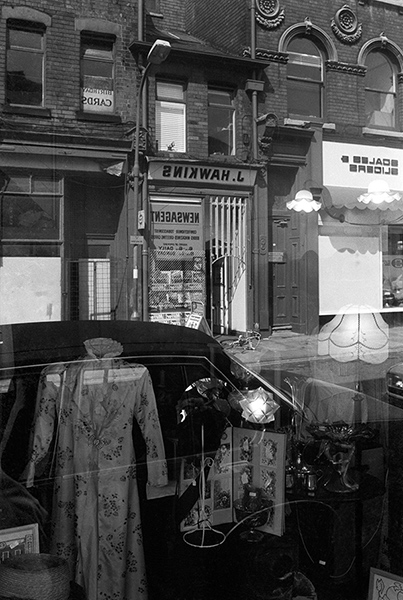
28q62: Shop window reflection, Midland St, 1981 – City Centre
13 March 2017
Myton Bridge, apparently officially opened in 1980 but only completed the following year provided a new viewpoint on the river. Its site was around 50 yards to the north of where there had earlier been a ferry and from 1865 a footbridge across the river which closed in 1934, South Bridge. A toll bridge, it was also known as the Ha’penny Bridge, and was a great shortcut for many who worked at Victoria Dock immediately to the east of the river.
This part of the river was the Old Harbour, where the port grew up before the docks and was still in use, with sand and gravel on the wharf at the right and barges moored two or three deep along the Old Town wharves.
Until the road leading to this bridge was upgraded in preparation for the bridge as Castle St, the section from Princes Dock Side was named Mytongate, and the area to the west of the Humber Dock was supposedly the site of the ancient hamlet of Myton; Myton St still runs from Osborne St to Castle St.
Engineers will find the design of Myton Bridge interesting, and it is described as a “cable-stayed bridge with fan system“. A swing bridge, the main span is 55 metres long and 32 metres wide, and it’s height was apparently restricted because of the need to be unobtrusive in its location next to the old town. It hardly achieves this, and the tall pylon with the control centre high above the roadway certainly doesn’t help.
The height of the bridge itself is enough to give a good views, and when I took this picture there was virtually traffic-free and I could easily walk from side to side. Now you can still walk across, but two new footbridges nearby are more pleasant as this bridge, the main route to Hull’s working docks, unceasingly carries very heavy traffic.
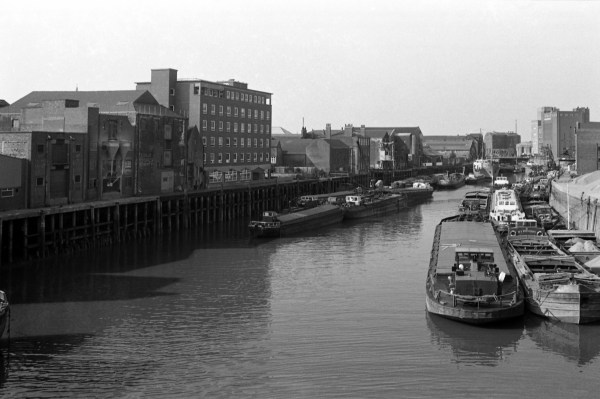
28r12: River Hull upstream view from Myton Bridge, 1981 – River Hull
14 March 2017
The Fish Street Day Schools were built in a Venetian Gothic style in 1871, next to the former Grammar School, the doorway at the left being for an external stairway to that school. Built by the Church of England, the Fish Street Schools soon became a board school.
The Fish St Schools were Grade II listed in 1994. The adjacent former Grammar School, built in 1583 as the Hull Merchant Adventurers’ Hall was the Grammar School from 1766 to 1878, and later the Choir School for Holy Trinity opposite, and was Grade II listed in 1952.
Both properties were renovated in the late 1980s and became the Hands-on History Museum, now only open to the public on a couple of Saturday afternoons each month.
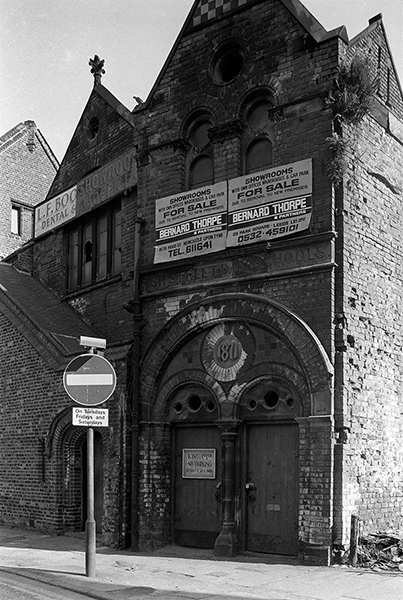
28r36: Fish Street Day Schools, South Church Side, 1981 – Old Town
15 March 2017
An open market had been held in front of Holy Trinity, Hull’s Parish Church, since medieval times and was still there three days a week. Now the open market has gone it has been renamed Trinity Square and enlarged by the removal of the wall that enclosed a churchyard area in front of the church, as well as the trees inside it. Both this square and the adjacent covered market are getting something of a makeover for 2017, though this was still in progress last month with the square still full of orange barriers around the new mirror fountains and other areas of paving.
In the background are the Old Grammar School, Fish St Day Schools and on King St, the London and Manchester Warehouse (Grade II listed in 1973) and other late 18th century listed buildings on King St. The Venetian window is above the archway into Prince St, a a rather rundown 1770s Georgian terrace more recently transformed (as the Hull Daily Mail said) into “a picture postcard curved row of terraced homes“.
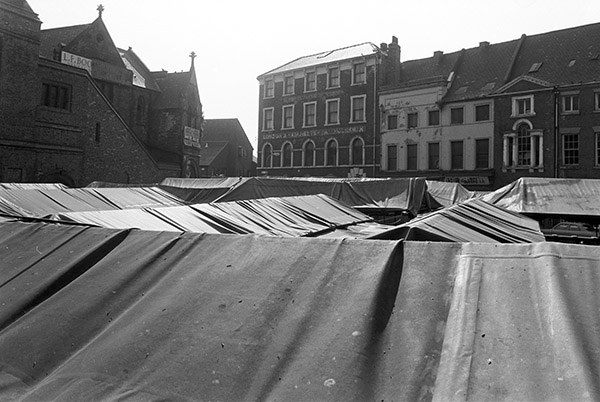
28r45: Open Market, Market Square (now Trinity Square), 1981 – Old Town
You can see the new pictures added each day at Hull Photos, and I post them with the short comments above on Facebook.
Comments and corrections to captions are welcome here or on Facebook.
Continue reading Hull Photos: 9/3/17-15/3/17
